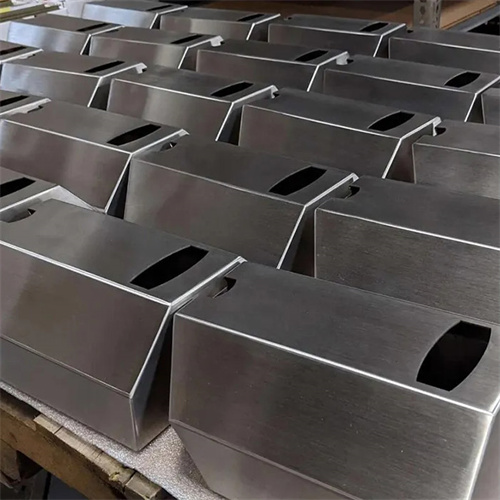Seamless round copper tube for electrical conduction
Seamless circular copper tubes for electrical conductivity are made from high-purity copper or copper alloys through extrusion and stretching processes. They offer excellent electrical and thermal conductivity, corrosion resistance, and mechanical properties, making them widely used in power generation, refrigeration, communications, aerospace, and other fields. These tubes come in a variety of sizes, with outer diameters typically ranging from 3 mm to 200 mm and wall thicknesses from 0.5 mm to over 10 mm. Lengths can be customized to meet diverse needs, making them a versatile conductive material that can meet diverse demands for electrical conductivity, heat dissipation, and fluid transport in diverse scenarios.

The manufacturing process for seamless round copper tubes for electrical purposes is complex and demanding, requiring multiple critical steps. First, high-purity electrolytic copper (99.95% copper content or higher) or a copper alloy with a specific composition is selected as the raw material and melted in a smelting furnace. Appropriate amounts of deoxidizers and alloying elements are added to remove impurities and adjust the composition to ensure the purity and performance of the molten copper. Subsequently, the molten copper is formed into tube billets using either horizontal continuous casting or the upward drawing method. Horizontal continuous casting allows for longer tube billets, while the upward drawing method better ensures the billet’s density and internal quality. After surface cleaning, the billet enters the hot extrusion process, where it is heated to the appropriate temperature (typically 700-900°C) and extruded through a die into a rough tube. The extrusion process requires careful control of temperature, speed, and deformation to ensure the rough tube’s dimensional accuracy and internal quality. High-precision seamless circular copper tubes for electrical conductivity require multiple cold-drawing passes to gradually reduce the outer diameter and wall thickness, improving dimensional accuracy. Each pass maintains deformation between 15% and 25%. Specialized lubricants are used to reduce friction and prevent surface scratches. During the drawing process, an intermediate annealing treatment is performed, heating the tube to 300-500°C and maintaining this temperature to eliminate work hardening and restore the material’s ductility and conductivity. Finally, the finished copper tube undergoes finishing, cutting, and flaw detection to ensure it is free of defects such as cracks and pores. Dimensional tolerances are maintained within ±0.01 mm, meeting application requirements.

Seamless circular copper tubes for electrical conductivity offer unique performance advantages, making them a standout in the field. First, their core advantage is excellent electrical conductivity, reaching over 85% IACS (pure copper), enabling efficient current conduction and reducing energy loss during power transmission. Second, their excellent thermal conductivity allows them to quickly dissipate heat generated during the electrical process, preventing overheating that can affect equipment performance. For example, in cable protection tubing, they provide both electrical and thermal conductivity. Third, their seamless structure ensures excellent airtightness and pressure resistance, enabling their use in pressure-tolerant environments, such as in refrigeration systems where they conduct and transport copper pipes. Fourth, their high strength and toughness prevent deformation or cracking during installation and use, ensuring stable and reliable electrical connections. Fifth, their excellent corrosion resistance allows them to maintain stable performance in humid and dusty environments, extending their service life and reducing maintenance costs.

Seamless round copper tubes for electrical conductivity have a wide and diverse range of applications. In power systems, they are often used to make conductive core tubes for cables and cooling tubes for transformers. For example, high-voltage cables use copper tubes as the conductive core, surrounded by an insulating layer, to transmit high voltage and high current. In refrigeration equipment, such as air conditioners and refrigerators, they function as both the compressor and refrigerant pipes, carrying current to drive the compressor and transporting refrigerant, enabling the refrigeration cycle. In the communications sector, they are used in base station feeder lines, providing both signal transmission and shielding to reduce signal interference. In aerospace, they serve as conductive pipes for aircraft and spacecraft, such as hydraulic systems and oil pipes, meeting the requirements of lightweight, high strength, and high conductivity. In new energy vehicles, they are used to make conductive connectors for battery packs and cooling tubes for motors, adapting to high-power, high-reliability operating environments. With the advancement of technology, the application areas of seamless round copper tubes for electrical conductivity continue to expand.

Industry trends indicate that the production of seamless round copper tubes for electrical purposes is moving toward high purity, high precision, thin-walled design, and composite functionalization. To meet the demands of high-end applications, the production technology for high-purity seamless round copper tubes for electrical purposes (copper content exceeding 99.99%) is continuously improving. By optimizing the smelting and purification processes, impurity levels are further reduced and conductivity is enhanced. In terms of dimensional accuracy, precision drawing and online testing technologies enable the outer diameter and wall thickness tolerances of copper tubes to be controlled within ±0.005 mm, meeting the assembly requirements of precision electronic equipment. Thinning is a key development direction. Advanced drawing processes have enabled the production of ultra-thin-wall conductive copper tubes with wall thicknesses under 0.3 mm, achieving lightweight design while maintaining strength and reducing material consumption. Regarding composite functionalization, copper tubes with multiple functions, such as conductivity, heat dissipation, and corrosion resistance, such as nickel-plated and chrome-plated surfaces, are being developed to further enhance their performance and applicability. Furthermore, the industry is actively promoting green production, reducing environmental impact through the use of environmentally friendly lubricants and recycling production waste. In the future, with the rapid development of new energy, high-end equipment and other industries, the demand for seamless round copper tubes for conduction will continue to grow, driving the industry to make more breakthroughs in material research and development, process innovation and other aspects.
